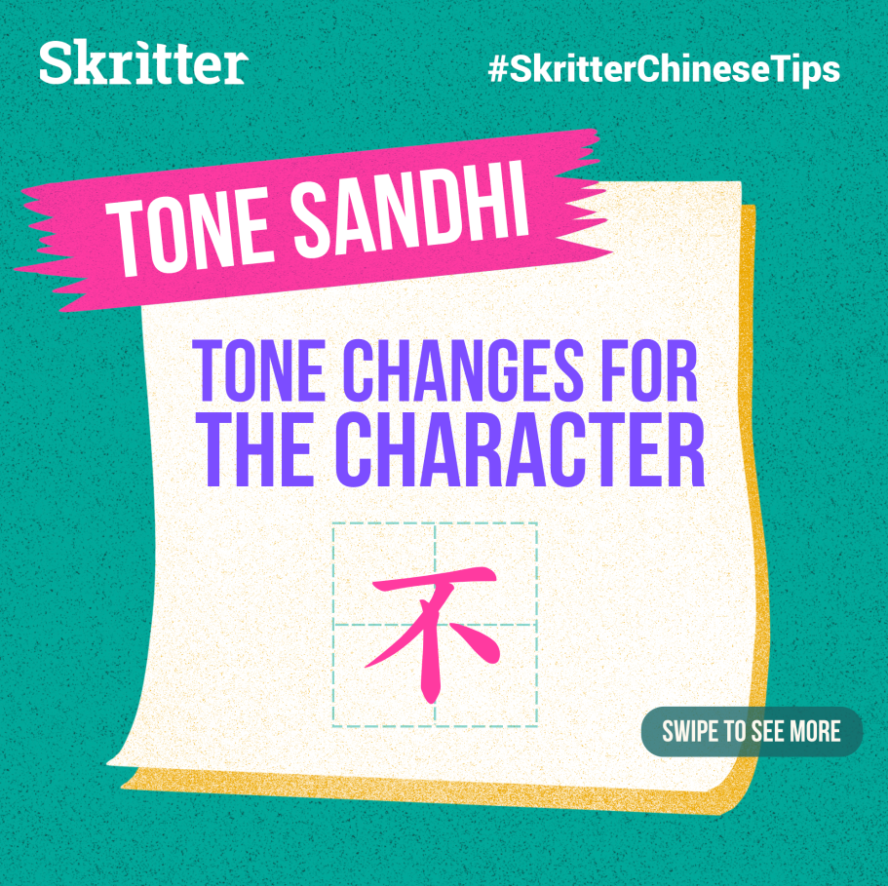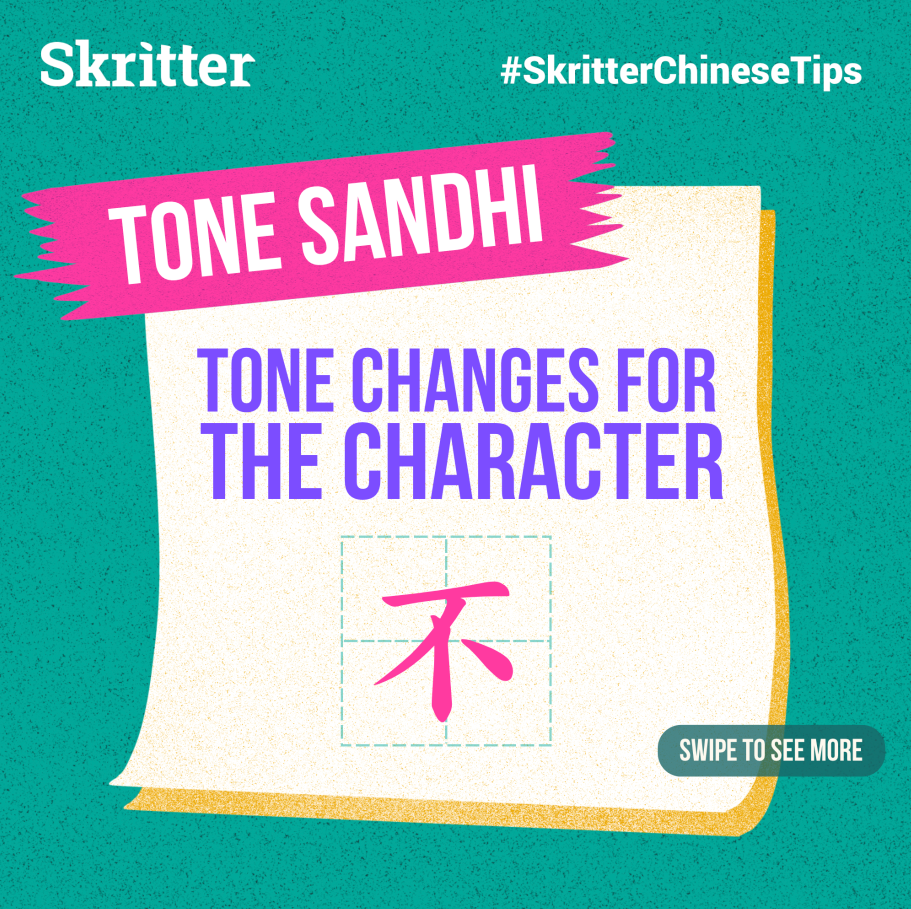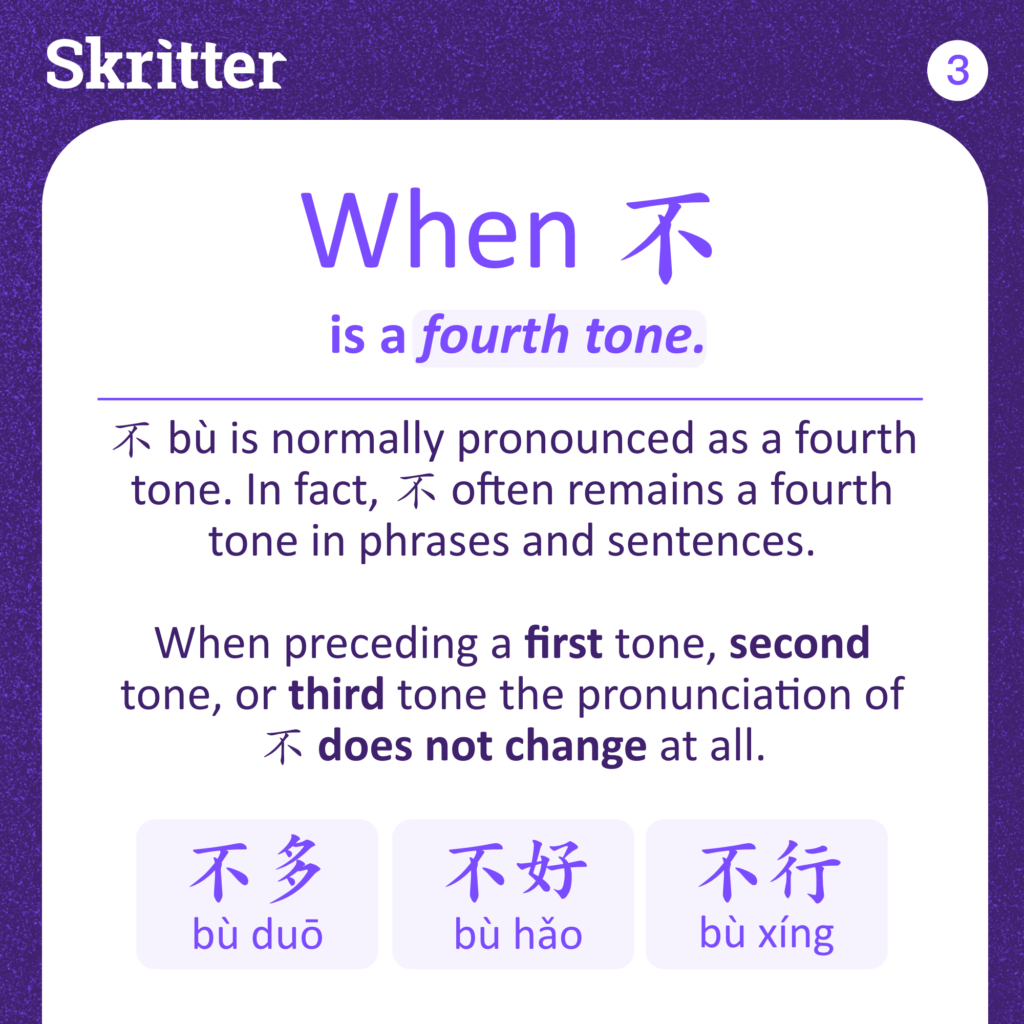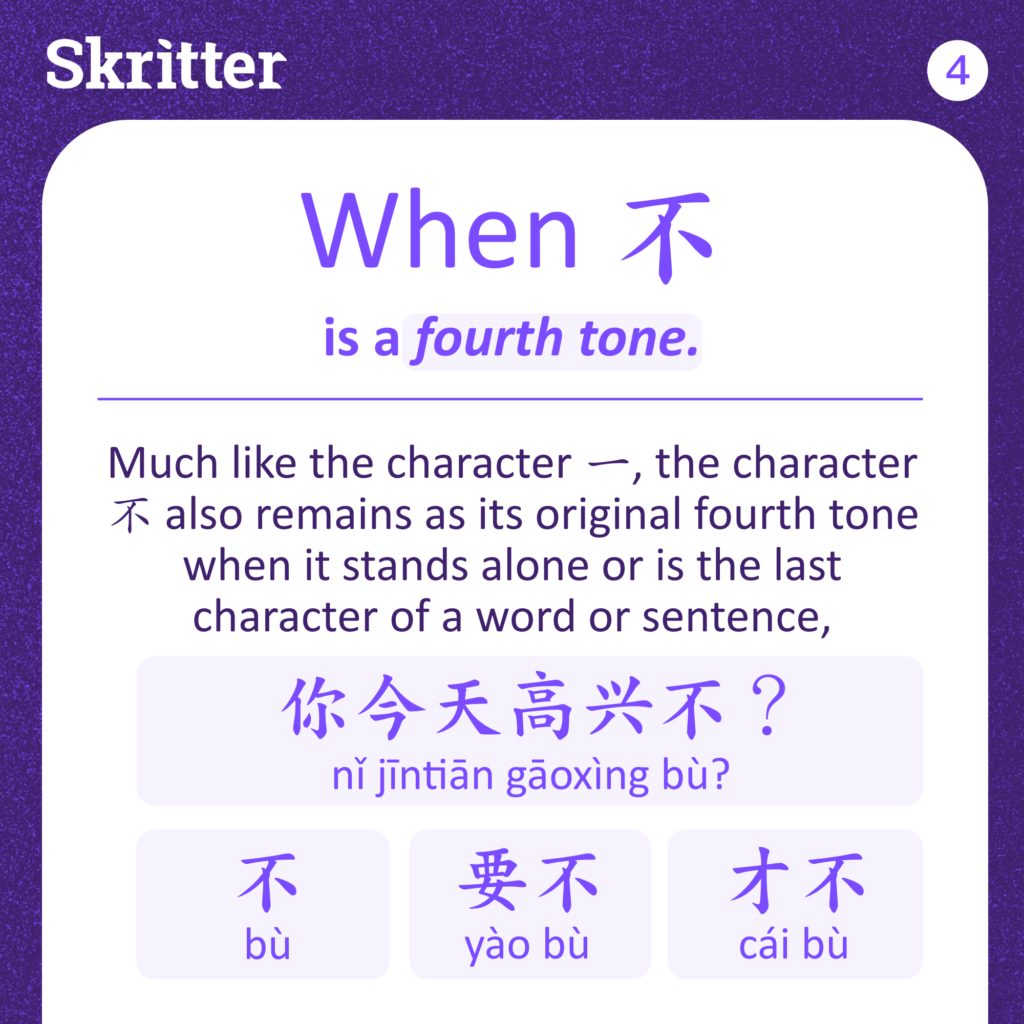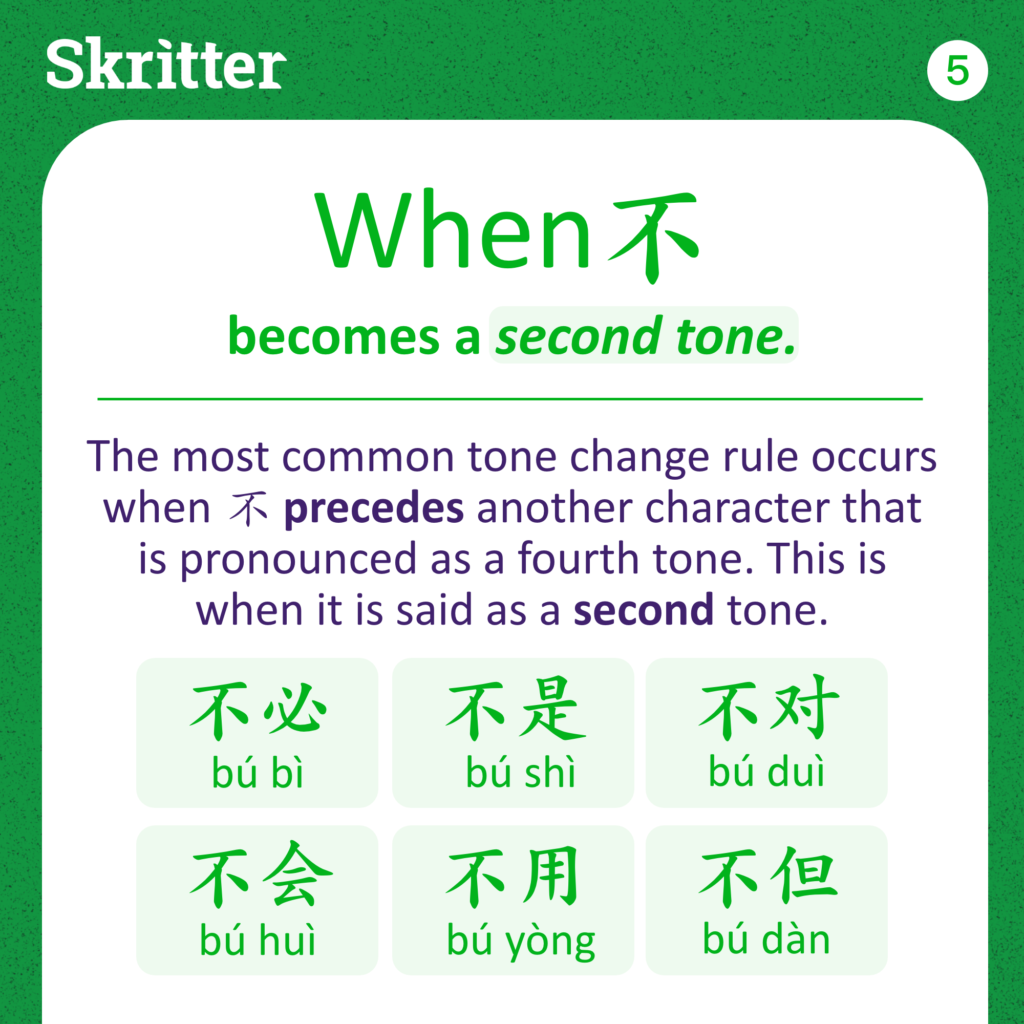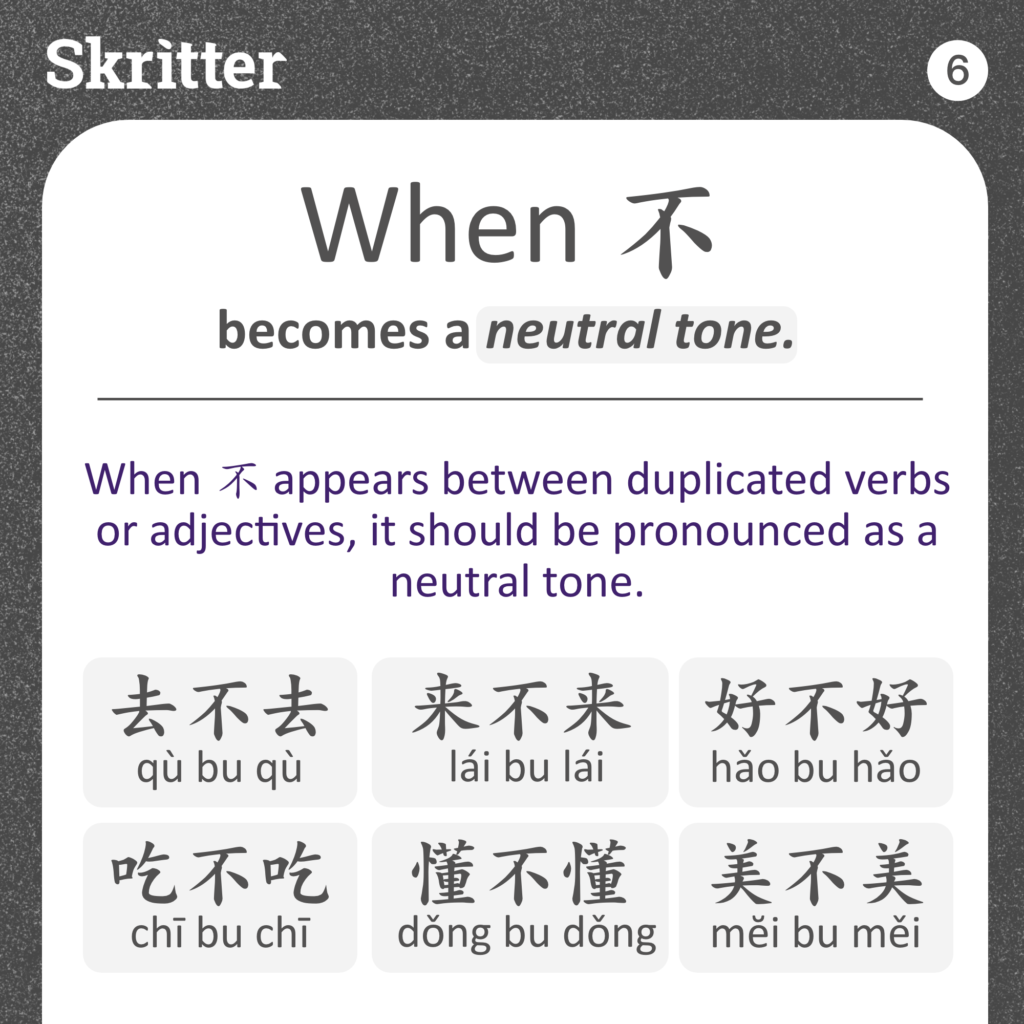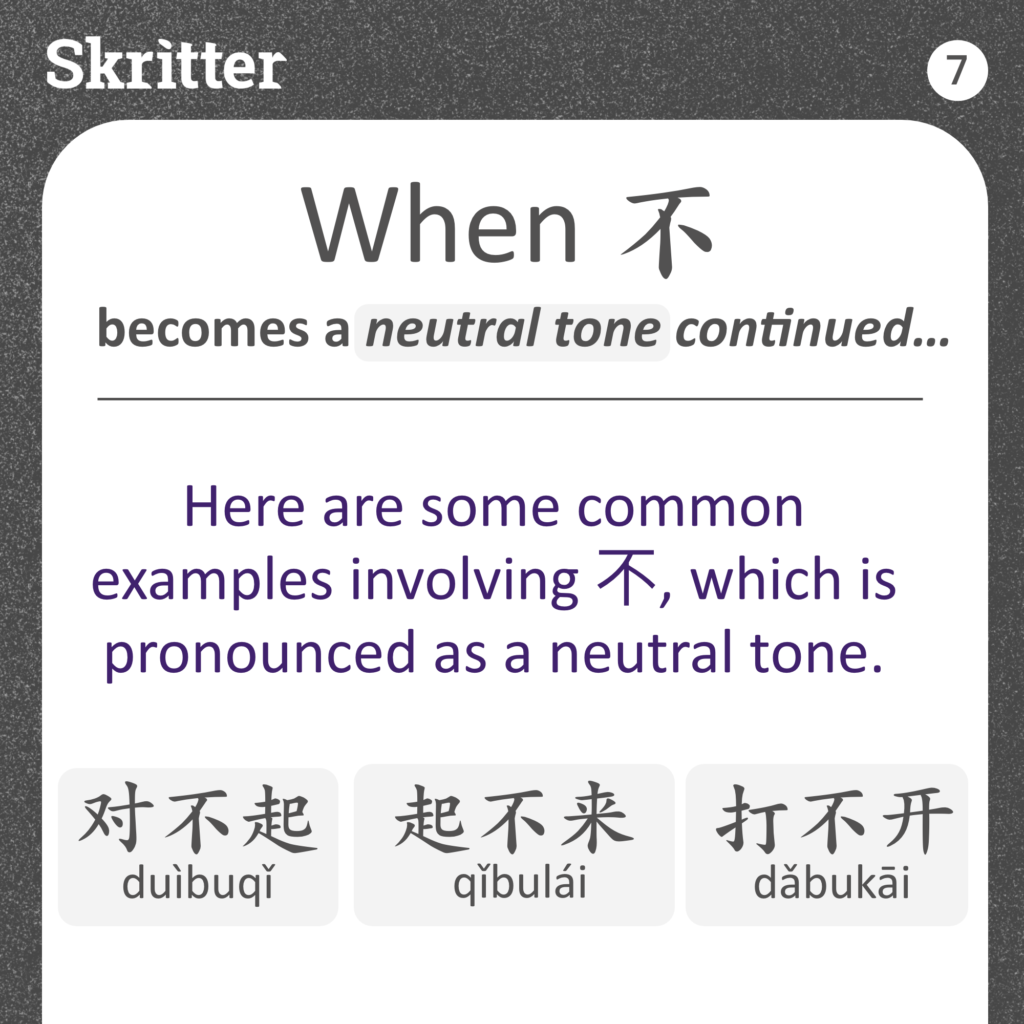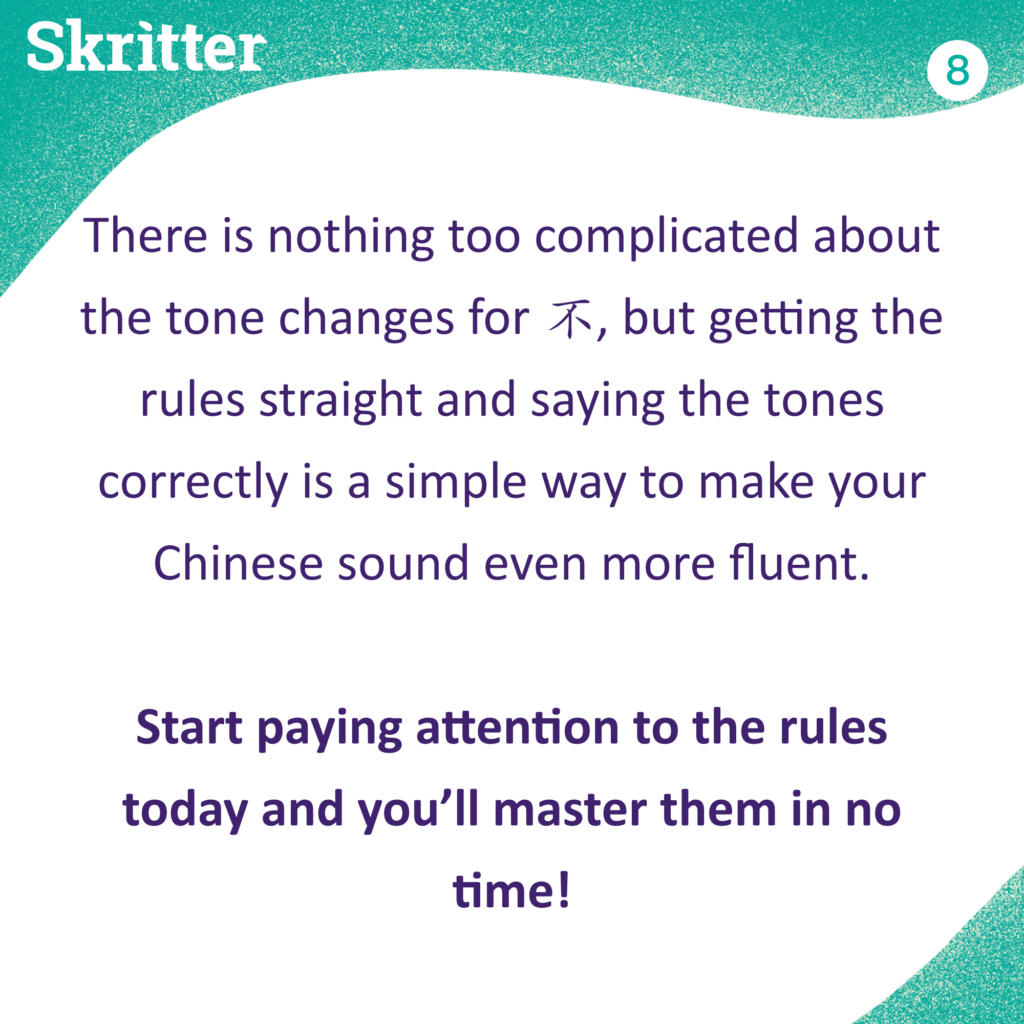Study the list over on Skritter
This week on the Skritter blog we’ll be further exploring the tone sandhi rules; specifically tone change rules for the character “不” (bù: no; not). If you haven’t done so, please check out our previous post where we explore tone sandhi for the character “一,” along with a general introduction of tone sandhi.
Tone Change Rules for “不”
“不” is originally pronounced as a fourth tone. In fact, “不” often remains a fourth tone in phrases and sentences. When preceding a first tone, second tone, or third tone the pronunciation of “不” does not change at all. Let’s take a look at the following examples:
- 不多 (bù duō)
- 不吃 (bù chī)
- 不高 (bù gāo)
- 不同 (bù tóng)
- 不行 (bù xíng)
- 不能 (bù néng)
- 不想 (bù xiǎng)
- 不買/不买 (bù mǎi)
- 不好 (bù hǎo)
Much like the character “一,” the character “不” also remains as its original fourth tone when it stands alone or is the last character of a word or sentence, for example:
- 不 (bù)
- 你今天高興不/你今天高兴不? (nǐ jīntiān gāoxìng bù?)
- 要不 (yào bù)
1.”不” Becomes a Second Tone
The most common tone change rule occurs when “不” precedes another character that is pronounced as a fourth tone. When preceding a fourth tone the character “不” is pronounced as a second tone, for example:
- 不必 (bú bì)
- 不是 (bú shì)
- 不對/不对 (bú duì)
- 不會/不会 (bú huì)
- 不用 (bú yòng)
- 不但 (bú dàn)
- 不錯/不错 (bú cuò)
2.”不” Becomes a Neutral Tone
When “不” appears between duplicated verbs or adjectives, however, it should be pronounced as a neutral tone, for example:
- 去不去 (qù bu qù)
- 来不来 (lái bu lái)
- 吃不吃 (chī bu chī)
- 玩不玩 (wán bu wán)
- 懂不懂 (dǒng bu dǒng)
- 美不美 (mĕi bu měi)
- 好不好 (hǎo bu hǎo)
- 白不白 (bái bu bái)
Additionally, “不” also is pronounced as a neutral tone when used in a negative resultative complement (see the Chinese Grammar Wiki for full explanation), for example:
- 對不起/对不起 (duìbuqǐ
- 起不來/起不来 (qǐbulái)
- 打不開/打不开 (dǎbukāi)
There is nothing complicated about the tone changes for “不,” but getting the rules straight and saying the tones correctly is a simple way to make your Chinese sound even more fluent. Start paying attention to the rules today and you’ll master them in no time!
If you have a question about any of the above please leave it in the comments below. And be sure to stay tuned for the final segment on tone sandhi, where we’ll be exploring the tone changes for the infamous third tone!


